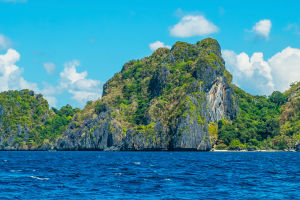Dutch windmills, with their iconic blades turning in the breeze, are much more than a tourist attraction.
They are deeply rooted in Dutch history, technology, and the nation’s battle against water.
Over centuries, these remarkable machines have become symbols of Dutch resilience and ingenuity, playing a pivotal role in shaping the country’s landscape and cultural identity!
The Role of Windmills in Reclaiming Land
One of the most vital contributions of Dutch windmills was their role in land reclamation. The Netherlands is famously low-lying, with large portions of the country below sea level. During the 16th and 17th centuries, windmills were central to the creation of polders—land areas reclaimed from the sea or marshes.
The windmills worked tirelessly to pump water from these areas into canals, lowering water levels and allowing farmland to be developed. The 19 windmills of the Kinderdijk area, built in the 18th century to drain the polders in the Alblasserwaard, are now a UNESCO World Heritage site due to their importance in land management and water control.
Windmills as Engineering Wonders
The design of Dutch windmills is a fascinating testament to engineering. These windmills were built to endure harsh conditions, with large, wooden blades rotating around a central axle. Early on, windmills were used to grind grain into flour, a task that transformed the agricultural industry.
Some of the most complex windmills in the Netherlands, such as the wipmolen (the "swivel mill"), were designed to change direction depending on wind direction, optimizing performance. These mills were also equipped with intricate systems to extract oil from seeds, grind chalk, and even saw timber, making them versatile tools for economic growth during the Dutch Golden Age.
Windmills and Dutch Cultural Identity
Dutch windmills are not just marvels of engineering—they represent the ingenuity and spirit of the Dutch people. They have become cultural symbols, representing hard work, self-sufficiency, and the ongoing struggle against water.
The windmill’s presence in Dutch landscapes has influenced countless artists, including renowned painter Rembrandt, who featured windmills in his work. In folklore, windmills also carry symbolic weight, representing the fight for survival against the elements. The sound of windmill blades turning has become emblematic of the Netherlands’ connection to its land and its history.
The Preservation of Dutch Windmills
Today, only a fraction of the windmills that once dotted the Dutch landscape still stand. Many were replaced by more modern systems as the country developed. However, significant efforts are made to preserve these iconic structures.
Over 1,000 windmills remain across the Netherlands, with many serving as tourist attractions, museums, or active heritage sites. The windmills in Kinderdijk and Zaanse Schans are prime examples where visitors can explore these structures up close, learning about their functions and history. They continue to serve as a reminder of the country’s innovative spirit and deep connection to its past.
Windmills as Symbols of Sustainability
While traditional windmills are no longer used for land drainage or milling grain, they still serve a symbolic purpose. Modern wind turbines have largely replaced them in generating sustainable energy, but the legacy of the windmill in the Netherlands continues to influence renewable energy efforts worldwide.
Windmill technology laid the groundwork for the Dutch role in wind energy today, with the country being a leader in offshore wind farms. The windmill stands as a reminder of the country’s long history of harnessing the power of nature for practical, sustainable use.
Dear Lykkers! Dutch windmills are a unique blend of engineering, history, and culture, and they continue to captivate both locals and tourists. These structures were not only functional marvels that drained land and ground grain—they were pivotal in shaping the landscape of the Netherlands, both physically and culturally.
Preserving these windmills, the Dutch ensure that their heritage and the lessons learned from centuries of innovation continue to inspire future generations. The windmill, a symbol of resilience against water, remains a treasured part of the nation's identity!
Why Are Dutch Windmills Considered National Icons? | Exploring The Benelux
Video by Exploring The Benelux


